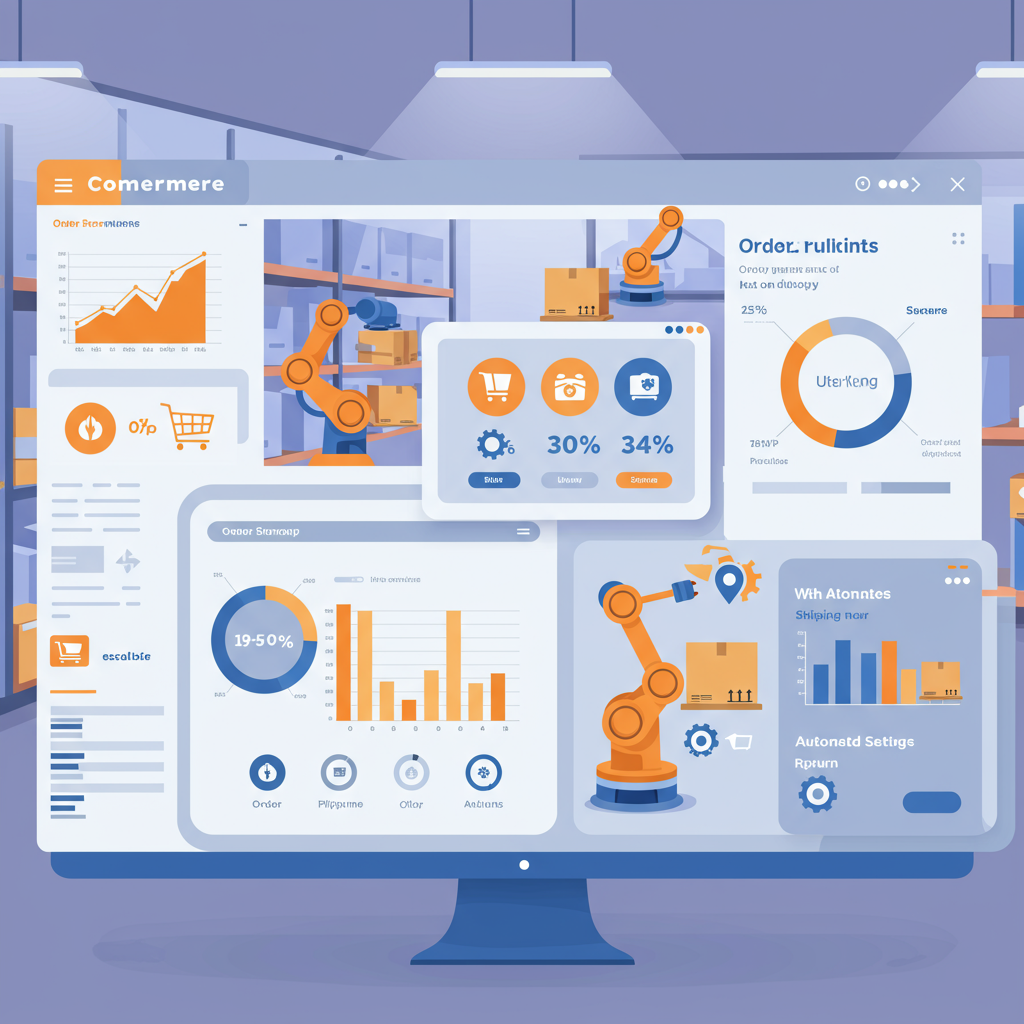Discover how I leverage automation to save time, reduce errors, and scale my e-commerce business on Shopify.
As a Shopify merchant, I know the thrill of a new order. That ‘cha-ching’ sound is music to my ears, signaling growth and customer satisfaction.
But I also know the grind of fulfillment. Manually processing each order, updating inventory, printing labels, arranging shipping – it quickly becomes overwhelming as your business grows.
That’s why I’m here to talk about automating fulfillment in Shopify. It’s not just a luxury for large enterprises; it’s a necessity for any merchant looking to scale efficiently.
Automation frees up your valuable time, significantly reduces the potential for human errors, and ultimately, makes your customers happier with faster, more accurate deliveries. Let’s dive into how I approach this critical aspect of my e-commerce operations.
First, let’s consider the fundamental ‘why’ behind automation. My primary goal is always efficiency. Manual tasks, no matter how carefully performed, are prone to human error.
Whether it’s a wrong address entered, an incorrect item count, or a missed tracking update, these small mistakes can lead to big headaches and dissatisfied customers.
Time is another critical factor. Every minute I spend on repetitive, administrative fulfillment tasks is a minute I’m not spending on strategic activities like marketing, product development, or engaging directly with my customers.
Scalability is paramount for any growing business. Imagine trying to handle hundreds or even thousands of orders manually. It’s simply not sustainable, and it becomes a bottleneck that stifles growth.
Automation allows your operational capacity to grow seamlessly with your sales, ensuring you can meet demand without sacrificing service quality.
When I think about fulfillment, several key areas immediately come to mind where automation can make a profound difference in my daily operations.
**Order Processing:** This is the initial step. Can orders be automatically marked as fulfilled, or sent directly to a fulfillment partner, once payment is successfully captured?
**Inventory Management:** Automatically updating stock levels across all sales channels after a sale or a return is absolutely crucial to prevent overselling and disappointing customers.
**Shipping Label Generation:** Creating shipping labels, often with pre-filled customer data and chosen shipping methods, is a massive time-saver that eliminates tedious manual entry.
**Tracking Information:** Automatically sending tracking numbers to customers and updating order statuses within Shopify and your chosen shipping carrier’s system keeps everyone informed.
**Customer Notifications:** Beyond just tracking, think about automated emails for order confirmation, shipping updates, delivery notifications, and even post-delivery follow-ups.
**Returns Management:** While more complex, parts of the returns process, like generating return labels, initiating refunds, or notifying warehouse staff, can also be streamlined through automation.
So, how do I actually implement this? Shopify offers some built-in features, but for true, comprehensive automation, I often look to a combination of native tools and powerful third-party solutions.
**Shopify’s Native Features:** You can set up automatic archiving of fulfilled orders, which helps keep your order list clean. If you use Shopify Shipping, some label generation is already streamlined.
**Fulfillment Services (3PLs):** This is a big one for me. Integrating with a Third-Party Logistics provider means they handle everything from storage and inventory management to picking, packing, and shipping. Shopify has direct integrations with many leading 3PLs.
**Dropshipping Apps:** If I’m running a dropshipping model, apps like Dsers or Spocket are invaluable. They automate the order placement process directly with my suppliers, often with just a few clicks.
**Shipping Apps:** Tools like ShipStation, ShippingEasy, or Pirate Ship integrate with various carriers (USPS, UPS, FedEx, etc.) and automate label creation, rate comparison, and tracking updates.
**Workflow Automation Apps:** For custom rules and complex scenarios, I rely on tools like Zapier, or Shopify Flow (if I’m on Shopify Plus). These allow me to create ‘if this, then that’ rules.
For example, I can set up a rule: ‘When an order is paid, if it contains product X, then automatically send fulfillment request to service Y and notify customer Z.’
**Inventory Management Systems:** For businesses with complex inventory needs, dedicated systems like Skubana or Brightpearl can integrate with Shopify to automate stock updates across multiple sales channels and warehouses.
When I’m setting up automation, my first and most crucial step is always to **audit my current fulfillment process**. I identify where the bottlenecks are, what tasks are most repetitive, and which ones consume the most time.
Next, I meticulously **research the best tools** for my specific needs and budget. There’s no one-size-fits-all solution, so I look for flexibility and strong integration capabilities.
I then **set up the integrations and rules carefully.** This is where attention to detail pays off. I always recommend starting small, automating one process or one product line at a time.
**Test, test, test!** This cannot be stressed enough. I place numerous test orders, simulate different scenarios (e.g., out-of-stock items, different shipping zones), and ensure everything flows exactly as expected before going live with real customer orders.
Finally, I continuously **monitor and optimize.** Automation isn’t a set-it-and-forget-it task. I regularly review performance, look for further efficiencies, and adapt my automated workflows as my business evolves and new tools become available.
What do *you* think about this approach? Have you found similar challenges or successes in automating your Shopify store? I’d love to hear your thoughts and experiences.
The benefits I’ve seen are immense. Beyond saving time and reducing errors, automation significantly improves the customer experience with faster shipping, accurate tracking, and timely updates.
It also provides valuable data. By tracking automated processes, I gain deeper insights into my fulfillment efficiency, helping me make better business decisions and identify areas for further improvement.
In conclusion, automating fulfillment in Shopify is a strategic and transformative move for any merchant looking to grow sustainably. It transforms a potential operational headache into a streamlined, efficient, and scalable operation.
I strongly encourage you to explore the options available and start your automation journey. Your future self, and your delighted customers, will undoubtedly thank you for it.






